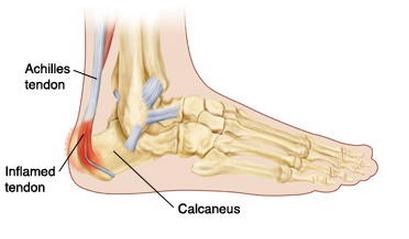Calcaneal Apophysitis – Symptoms, Causes, Treatment
What is Calcaneal Apophysitis?
It is otherwise known as Sever’s Disease which is an inflammation of the person’s calcaneal growth plate or “apophysis” which is located at the posterior part of the calcaneus, the medical term for the heel bone. This leads to disability as well as pain. It affects mostly children, often boys, between the ages of 8-14. Children of this age are highly affected because the heel bone or “calcaneus” is not yet developed fully until the child reaches 14 years of age when there will be recurrent stress on the growth plate and it can lead to inflammation. It can occur in both or one foot. It is different from heel pain that adults experience which may improve in time because the Sever’s disease doesn’t subside or doesn’t improve.

Calcaneal Apophysitis Symptoms
Persons with Calcaneal Apophysitis will experience the following symptoms associated with the condition, such as:
- Episodes of limping
- Walking on toes only
- Difficulty engaging in an active lifestyle that requires jumping, running, or other sports-related activities
- Pain, especially when the affected heel is squeezed
- Pain in the bottom of the affected heel
- Tenderness in the affected area
- Swelling in the affected area
Calcaneal Apophysitis Causes
As mentioned earlier, the calcaneal Apophysitis occurs most often in children who overuse their heel bone or have undergone recurrent trauma of the heel bone such as sprain injuries, occurring most often in sports. Aside from that, having a congenital tight muscles in the calf is a high risk for developing this condition. Calcaneal Apophysitis happens because:
- Trauma such as a sprain or injury
- Overused heel bone
- Congenital tight muscles in the calf
Calcaneal Apophysitis Diagnosis
Orthopedic professionals are the ones who diagnose children with this kind of condition. Prior to diagnosing, they require them to undergo certain tests to confirm that they really have this condition. Such tests include:
- Medical history assessment test
- Physical assessment test
- X-ray
- Magnetic Resonance Imaging or MRI
These are the basic and common tests that a patient undergoes to confirm this condition. However, the physician may require other tests to rule out other possible conditions.
Calcaneal Apophysitis Treatment
When it comes to treating the patient diagnosed with calcaneal Apophysitis, the treatment will vary from one person to another. The treatment will be individualized and may require one of the following:
Heel support
Custom orthotic devices or shoe inserts that may be used temporarily are good ways to provide heel support.
Shoe Modification
Wear shoes that lessens stress on the affected heel bone. Aside from that, it is suggested that the patient wears shoes that have an open back to reduce the pressure of the affected heel bone. Also, wear a higher-heeled shoe. Wearing such will lead to the elevation of the heel, decrease the force required, and allow pain to subside gradually.
Reduction of activity
When a patient, specifically a child, has this kind of condition, he or she is advised to stop all the activities which may lead to pain
Pharmacological treatment
The physician usually prescribes medications of NSAIDs or non-steroidal anti-inflammatory drugs like ibuprofen which acts to reduce the inflammation as well as pain.
Immobilization
When the person is dealing with the severe form of this disease condition, he or she should immobilize the affected heel through the use of a cast. This is done to aid in recuperation of the affected tissue.
Physical therapy
In promoting healing, there is a need for physical or stretching therapy. It promotes healing as it aids in blood circulation.
Ice application
Through ice application for at least 20 minutes maximum, it will reduce inflammation, swelling, and cool the area that is affected.
This kind of condition may recur while the bone is still immature. When this happens, contact a trusted ankle and foot surgeon as soon as possible.